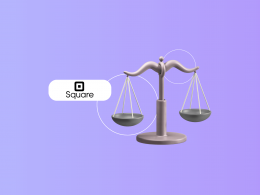The first thing any small business owner has to remember is that if you have employees, you’ve got to follow the federal employment tax rules and keep up with changing regulations. Easier said than done! Stats are disappointing and show that 40% of small businesses pay an average of $845 payroll tax fines each year.
Failure to pay payroll taxes or missing the obligatory payment may result in costly fines and penalties. But there’s something even worse – you can get a real prison sentence.
The bottom line is clear: negligence with payroll tax calculations and payments can be ruinous! But forewarned is forearmed, as they say. Let’s break down payroll taxes and make sure you can keep your business on the safe side. This article will provide you with a detailed guide on payroll taxes that an employer has to pay.
Contents:
2. How to make payroll tax calculations?
3. Payroll tax deposit schedule and rules
- Form 940 — Employer’s Annual Federal Unemployment (FUTA) Tax Return
- Form 941 — Employer’s Quarterly Federal Tax Return
- Form 944 — Employer’s Annual Federal Tax Return
- Form 945 — Annual Return of Withheld Federal Income Tax
- Form W-2 — Wage and Tax Statements
5. Common payroll tax filing mistakes for a small business to avoid
Payroll tax definition
Payroll tax is money deducted from every employee’s paycheck by an employer and remitted to the government on the employee’s behalf. “Payroll taxes” is actually an umbrella term, as employers are required to withhold state and federal income taxes, as well as some other taxes.
Understanding your payroll tax obligations
You have to take care of a few things to make it through payroll tax filing unscathed.
First things first — when you hire your first employee you need to get a federal employer identification number (EIN). You may also need to get state and local tax numbers for payroll tax filing. The EIN will be used on your deposits, returns, and other related documents. Now, you are a legal employer complying with federal payroll tax rules! As an employer, you have obligations to the government and tax agencies — the IRS (Internal Revenue Service) and SSA (Social Security Administration), as well as to your employees.
By federal law, employers are required to make contributions to fund social programs, such as Social Security, Medicare, Social Insurance and Retirement programs, etc. There may be state and local payroll tax withholdings, as well.
All in all, small business payroll tax rules require an employer to:
- Withhold federal payroll tax from an employee’s paycheck and deposit the amount withheld. Payroll tax withholdings may differ from state to state. Make sure to contact the tax agency for more detailed information.
- File reporting and information returns to the tax agencies, submitting detailed payroll tax filing forms. You must properly report income, amounts withheld, and amounts paid on behalf of employees and contractors.
- Provide employees and contractors with the IRS assigned forms explaining the compensation paid and amounts withheld.
📌 Note: you need to make all federal tax deposits through the Electronic Federal Tax Payment System (EFTPS).
How much is payroll tax?
payroll tax consists of
- federal and state income taxes
- FICA taxes (Social Security and Medicare)
- FUTA taxes (a contribution to the federal unemployment pool)
- disability insurance taxes (applies only to such states as California, Hawaii, New Jersey, New York and Rhode Island)
There are both obligatory and optional payments, which are called, respectively, statutory and voluntary payroll tax deductions.
📌 Note: As opposed to payroll taxes, the IRS uses a more official term — employment taxes — to describe an employer’s obligations to the government. People may find this intersection of terms confusing, but they are generally the same, excluding the self-employment tax. Self-employment tax falls into the category of employment taxes, not payroll taxes, because as a small business owner, you’re self-employed, and you don’t pay yourself a salary.
How to make payroll tax calculations?
Step #1 for payroll tax: determine which workers are taxable
The IRS has common law rules which include a series of tests:
- behavioral test
- financial test
- relationship test
Use these tests to identify taxable employees and make payroll tax filing easier.
Step #2 for payroll tax: calculate the taxable wages
You need to calculate gross pay — the total amount of money you paid your employee is comprised of hourly wages, overtime pay, bonuses, profit sharing, gifts to an employee, and all other kinds of compensation.
Step #3 for payroll tax: withhold (deduct) percentages from an employee’s paycheck
Now you have to figure out the percentage to withhold for federal, state, and local taxes, as well as FICA and FUTA.
Statutory payroll tax withholding calculations
Statutory small business payroll tax deductions encompass:
- Federal income tax withholdings
- State income tax withholdings, if applicable
- Local tax withholdings, such as city, county, or school district taxes, if applicable
- FICA — Federal Insurance Contributions Act taxes
- Social Security withholding of 6.2% in 2020 and 202, up to the annual maximum taxable earnings or wage base of $137,700 for 2020 and $142,800 for 2021
- Medicare employee tax withholding of 1.45%
- Additional Medicare tax withholding of 0.9% for employees earning over $200,0001
- FUTA — Federal Unemployment Taxes
- SUTA — State Unemployment Taxes, if applicable
Voluntary payroll tax withholding calculations
After the statutory payroll tax deductions are calculated, you can think of the voluntary ones. They can only be withheld with the employee’s consent and may include:
- Health insurance premiums (such as medical, dental, and eye care)
- Life insurance premiums
- Retirement plan contributions (401(k) plan)
- Employee stock purchase plans, such as ESPP and ESOP plans
- Meals, uniforms, union dues, and other job-related expenses
After both legally required and voluntary paycheck deductions are subtracted, the employee receives their net pay. Finally, pay (deposit) the calculated payroll tax deductions to the tax agency.
Payroll tax deposit schedule and rules
Payroll taxes are paid to the IRS either semi-weekly or monthly. Payroll tax deposit due dates depend on how many employees you have and how much payroll taxes you owe:
- Monthly Depositor — deposit during a given month or before the 15th day of the following month.
- Semi-weekly Depositor — deposit on Wednesday, Thursday, and/or Friday by the following Wednesday; deposit on Saturday, Sunday, Monday, and/or Tuesday by the following Friday.
- FUTA Deposits — deposits are required for the quarter within which the tax due exceeds $500. Pay by the last day of the first month that follows the end of the quarter. If the due date for making your deposit falls on a Saturday, Sunday, or legal holiday, you may make your deposit on the next business day.
| The end of the quarter | Payroll tax deposit due date |
| March 31 | April 30 |
| June 30 | July 31 |
| September 30 | October 31 |
| December 31 | January 31 |
📌 Note: check the whole calendar with all the important dates for tax season in our article.
Halfway through! Now let’s pay attention to reporting wages, tips, and other compensation paid to an employee.
Payroll tax forms
The next big thing coming after you calculate payroll tax deductions and deposit the withholdings is reporting tax returns or filing.
Payroll tax filing is reporting information that you used to calculate employer payroll taxes to the IRS. You have to use special forms and complete the process strictly within a period set by the IRS. Contact local tax agencies to find out if you’re required to file state and local reports.
The most common payroll tax forms assigned by the IRS are:
→ Form 940 — Employer’s Annual Federal Unemployment (FUTA) Tax Return
— used to report FUTA paid throughout the year.
📝 Filing deadline: January 31 (if employers made all payroll tax deposits when due, they have 10 additional calendar days to file).
→ Form 941 — Employer’s Quarterly Federal Tax Return
— shows:
- the amount collected for income payroll tax withholding from employees
- the amount collected for FICA withholding (Social Security and Medicare) from employees
- the total amount owed for FICA withholding (including the employer portion of this tax)
📝 Filing deadlines:
- Quartet I — May 2
- Quarter II — August 1
- Quarter III — October 31
- Quarter IV — January 31 (of the next year)
→ Form 944 — Employer’s Annual Federal Tax Return
— for the employers, whose annual liability for Social Security, Medicare, and withheld federal income taxes is $1,000 or less.
📝 Filing deadline: January 31 (if employers made all payroll tax deposits when due, they have 10 additional calendar days to file).
→ Form 945 — Annual Return of Withheld Federal Income Tax
— used to report federal income tax withheld from non-payroll payments (pensions, military retirement, voluntary withholding, backup withholding).
📝 Filing deadline: January 31 (if employers made all payroll tax deposits when due, they have 10 additional calendar days to file).
→ Form W-2 — Wage and Tax Statements
— filed to report wage and salary information as well as:
- federal income tax
- state and local income tax (if applicable)
- Social Security, and Medicare taxes withheld
📝 Filing deadline: January 31
📌 Note: You must also include the amounts you have deposited for your employer payroll taxes. If your deposits are less than the amount owed, you must pay the IRS. Be precise with these reports, since they will allow you to request payroll tax refunds in case you overpay.
Choose the way to report:
- File manually by completing the payroll tax forms according to the instructions provided by the IRS. Mail the form to the IRS, along with any payment you owe.
- Use payroll tax software or service to file it electronically.
- Get professional help from an accountant or tax professional (great idea if you want to maximize your payroll tax refund).
Common payroll tax filing mistakes for a small business to avoid
Keeping up with employment regulations may be difficult. There are plenty of places to stumble when filing payroll taxes, but we’d like to warn you about the most common ones that SMB owners repeat. It’s always better to learn from other people’s mistakes.
Payroll tax filing mistake #1: Filing independent contractors as employees
The amount of money you pay to a contractor is called ‘non-employee compensation’. Contractors report and pay their payroll taxes. You don’t have to deposit income or FICA tax withholdings from your contractor’s paychecks. But you have to file an annual report for contractors (1099-MISC or 1099-NEC) to the IRS. If you file your employee as a contractor, you will have to pay back taxes for their work along with accrued penalties and interest.
Payroll tax filing mistake #2: Calculating overtime wages as regular wages
When talking about payroll taxes, overtime wages are not your employee’s regular wages. They are calculated differently. Federal law states that an employee must get not less than 1.5 of their regular pay as overtime wages. States may have different overtime requirements.
Payroll tax filing mistake #3: Not having enough payroll records
Keep full and accurate records to validate the figures you report to the tax agencies. A tax entity may request documentation to back up your payroll tax returns. Record detailed information about hours worked, wages paid, overtime, bonuses, tips, holiday pay, vacation pay, and sick pay.
Bottom line
Meeting small business payroll tax filing regulations is difficult, and penalties for noncompliance can be severe. We hope this article’s given you a clearer view of the taxes paid by an employer on behalf of employees.
Be careful to maintain compliance with your state and federal regulatory bodies. Avoid payroll tax filing mistakes and reduce your risk of incurring penalties and interest for unpaid or underpaid taxes. Get reliable technical help and save yourself some energy to concentrate on what matters — your business. Because apart from paying taxes, the SMB owner has loads of things to do. You know it better!

.png)





I appreciate that you explained that a report of your income should be included for proper payroll processing. Yesterday, my friend informed me they were hoping to find a trustworthy payroll service to help them with payroll processing for a proper employee management solution for their clothing company. He asked if I had thoughts on the best option to consider. I appreciate the information on the best financial guide. I’ll tell him they can consult payroll services as they can help provide more details about their services.
I am very glad we were able to help. All the best!